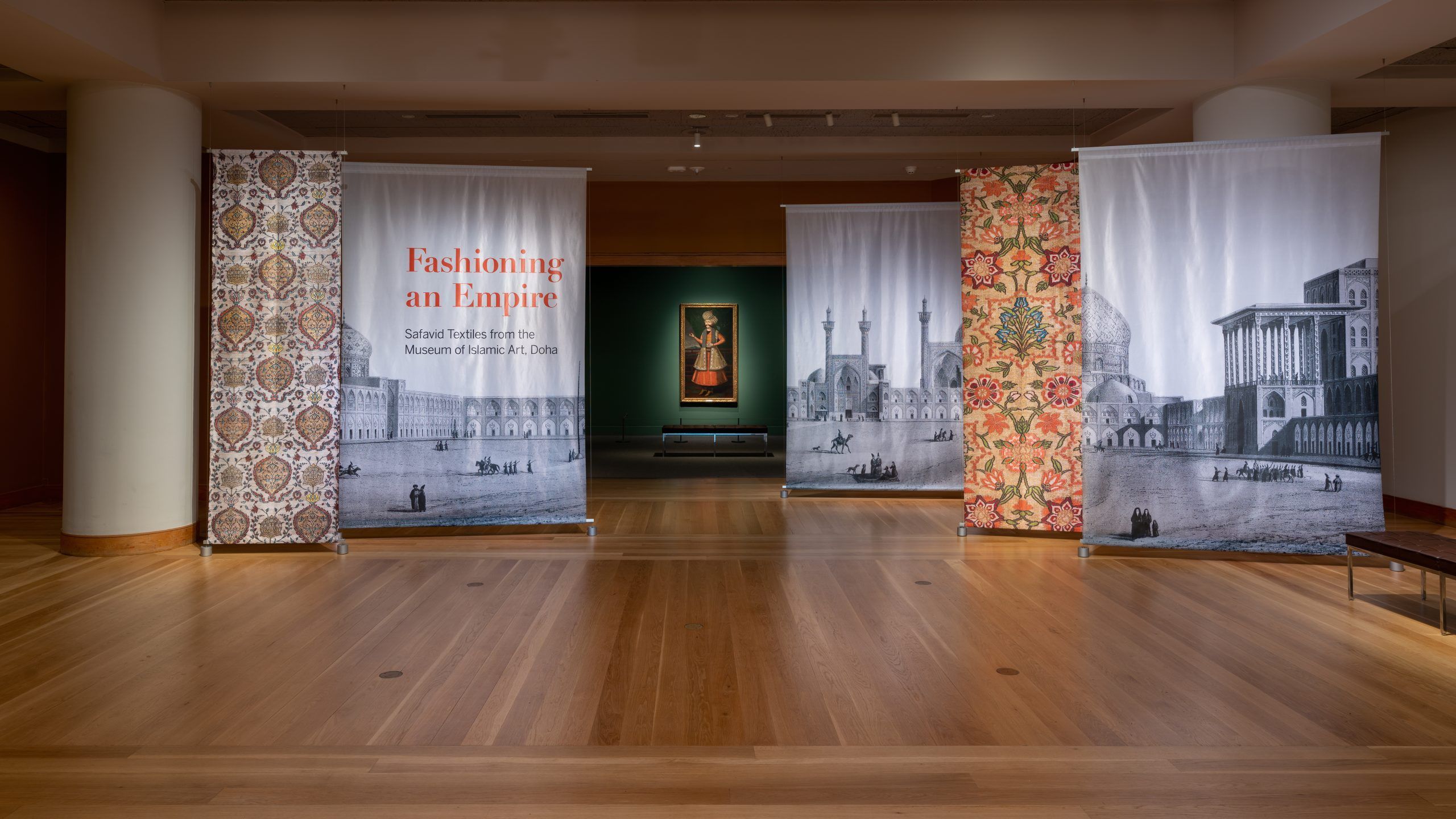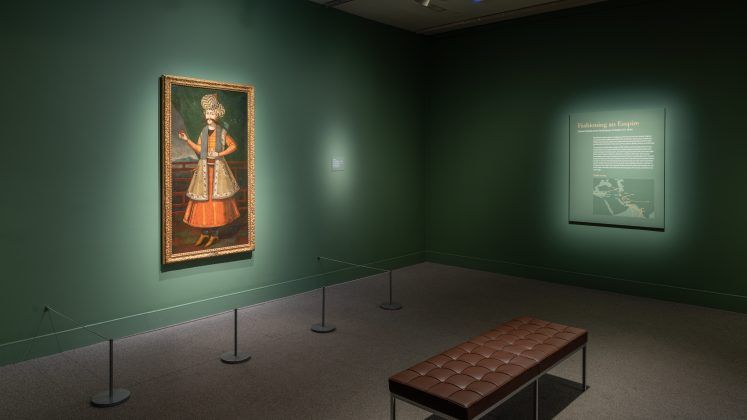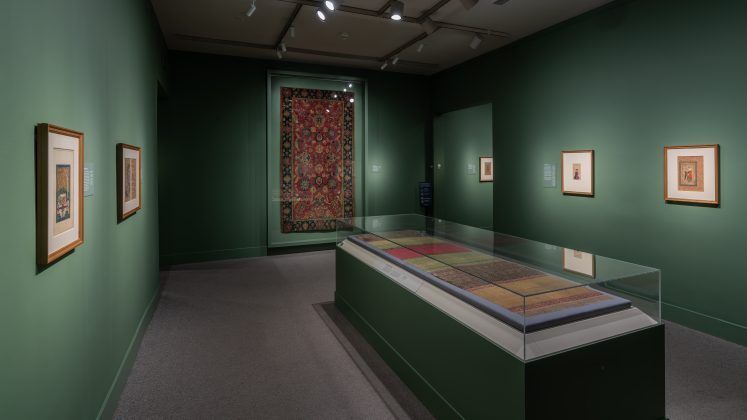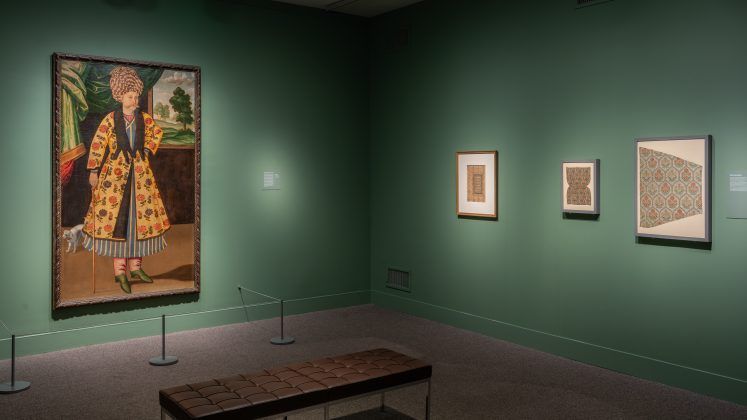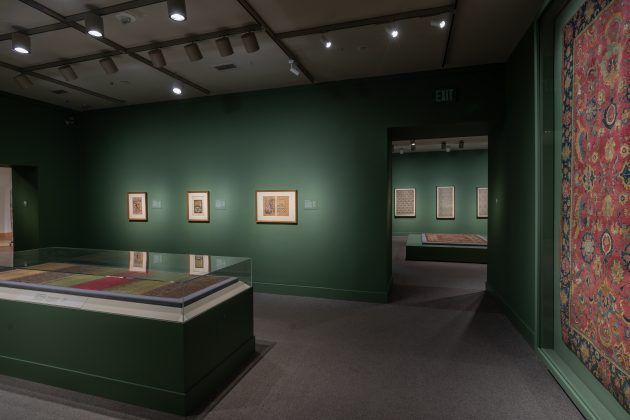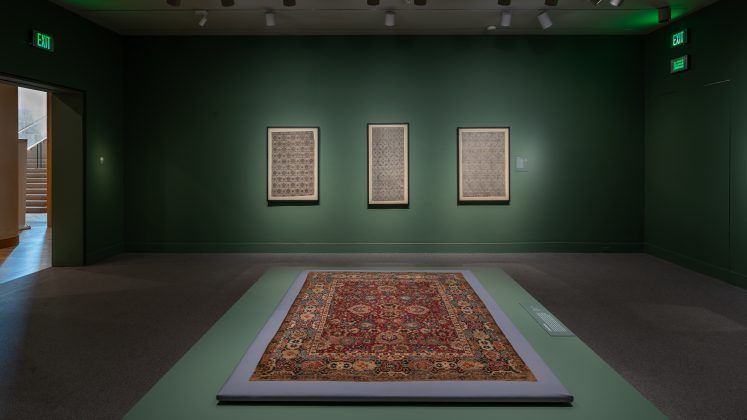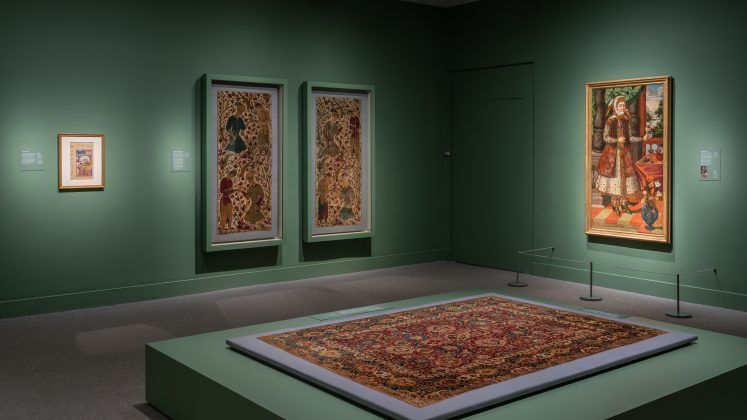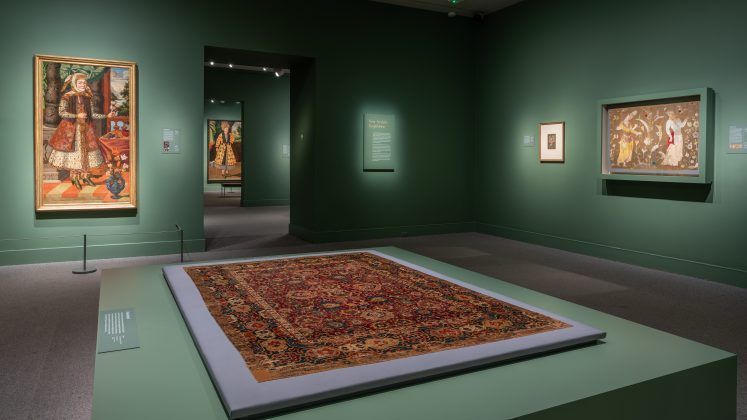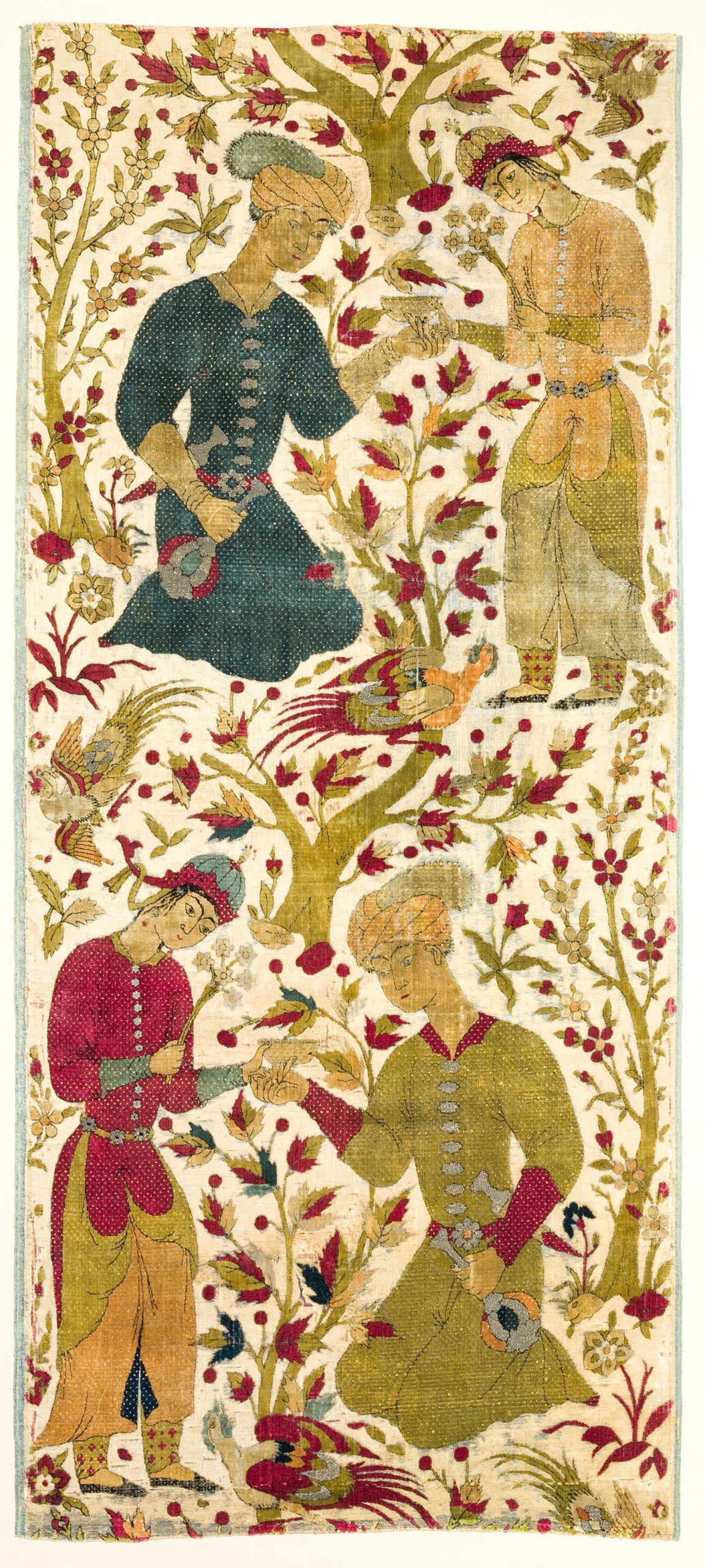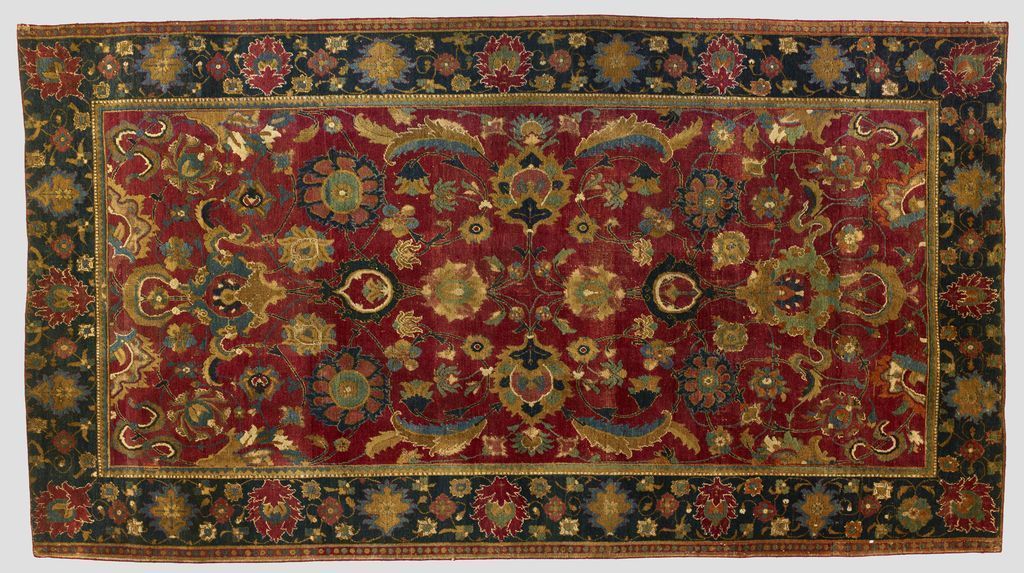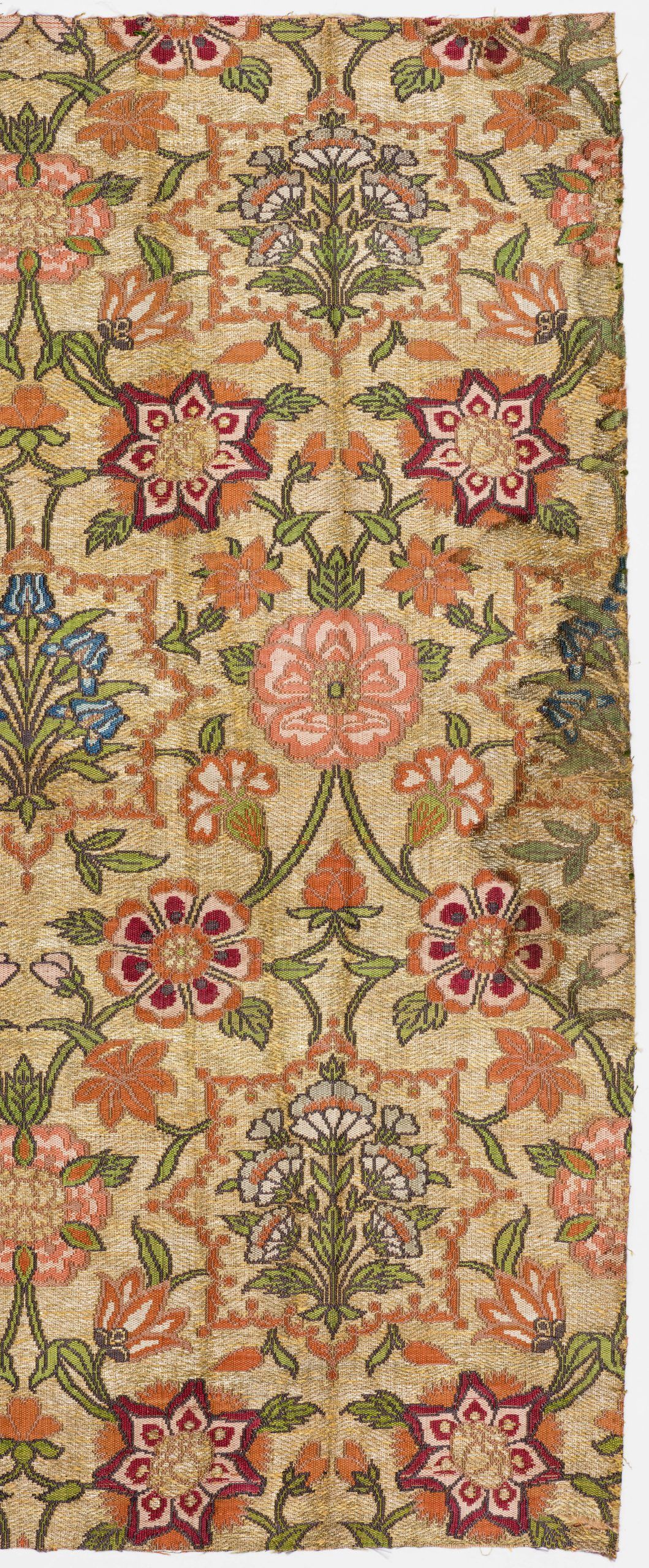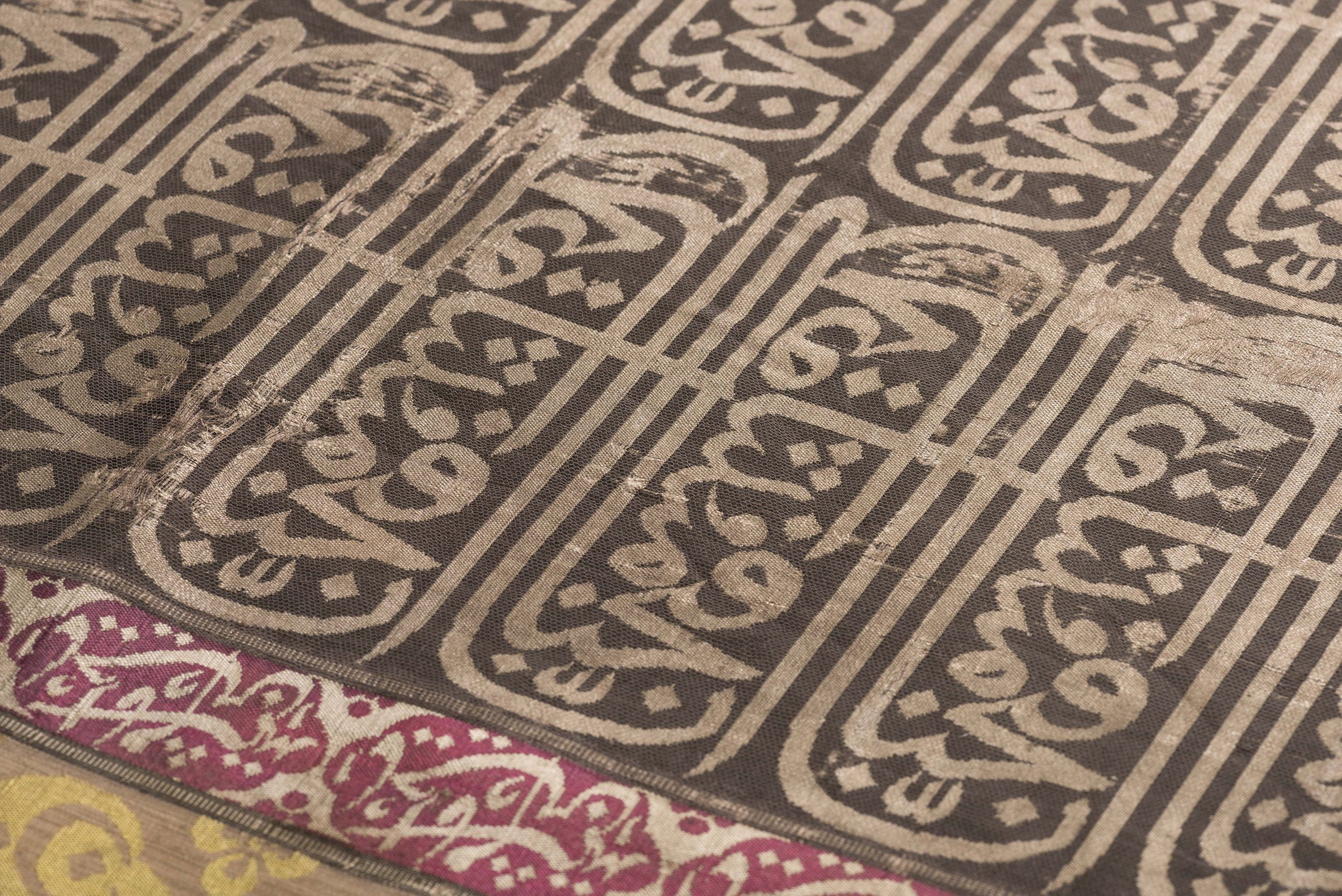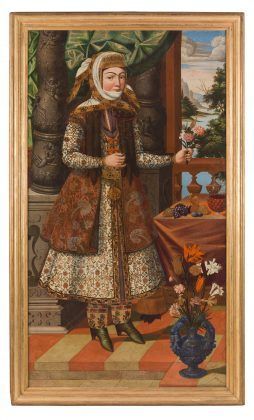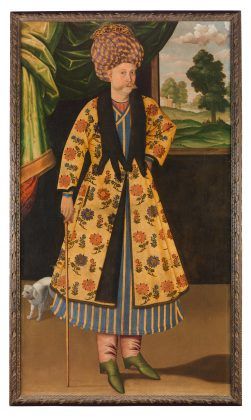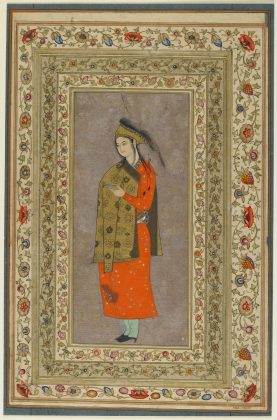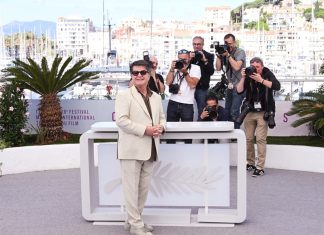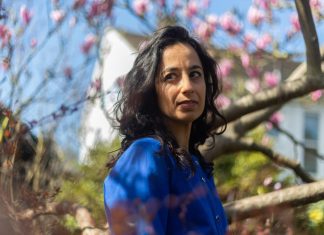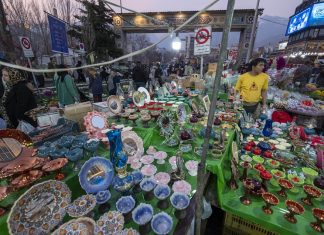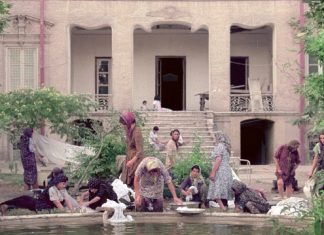By Nazanine Nouri
An exceptional collection of 17th-century textiles and full-length oil portraits from Safavid Iran (1501-1722) has gone on display for the first time in the United States at the Smithsonian’s National Museum of Asian Art in Washington, D.C.
[aesop_image img=”https://kayhanlife.com/wp-content/uploads/2022/02/20211217-Fashioning-an-Empire-Exhibit-6-scaled.jpg” panorama=”off” align=”center” lightbox=”on” captionsrc=”custom” caption=”Fashioning an Empire.” captionposition=”left” revealfx=”off” overlay_revealfx=”off”]
“Fashioning an Empire: Safavid Textiles from the Museum of Islamic Art, Doha” presents remarkable pieces on loan from the Museum of Islamic Art in Doha, together with some of the finest illustrated manuscript paintings from the National Museum of Asian Art’s own collections.
The exhibition highlights the importance of silk in the social, economic and religious life of 17th-century Iran, and its role in positioning the Persian Empire at the center of a vibrant global exchange.
“We are especially proud to highlight for the public the rich artistic traditions of the Safavid empire, which ruled for over 200 years and under which Iran became a great cultural center,” said Chase F. Robinson, a historian of Islam who is the Dame Jillian Sackler Director of the Arthur M. Sackler Gallery and Freer Gallery of Art at the Smithsonian.
“Paintings, ceramics, textiles and carpets, as well as architecture, poetry and philosophy reached new levels of excellence under Safavid patronage.”
The exhibition was curated by Massumeh Farhad, the Ebrahimi Family Curator of Persian, Arab and Turkish Art at the National Museum of Asian Art.
“I sought to create a sense of the remarkable cosmopolitanism of 17th-century Iran,” she said, “and communicate the power of textiles as one of the most successful conduits for transmitting new artistic ideas between the East and the West.”
[aesop_image img=”https://kayhanlife.com/wp-content/uploads/2022/02/F1946.12.231-scaled-1.jpg” panorama=”off” credit=” Purchase—Charles Lang Freer Endowment. Freer Gallery of Art, F1946.12.231.” align=”center” lightbox=”off” captionsrc=”custom” caption=”Qays (Majnun) First Glimpses Layli. From a copy of the Haft awrang (Seven Thrones) by Jami (d.1492).Iran, Safavid period, 1556–62 Opaque watercolor, ink, and gold on paper.H x W: 34.2 x 23.2 cm.” captionposition=”left” revealfx=”off” overlay_revealfx=”off”]
The exhibition features exquisite Safavid carpets and brocade textiles, including silks made with gilt silver or silver-covered threads, the most expensive fabric on the European market. These fabrics were most notably fashioned into ‘robes of honor’ which were distributed by the ruler to high-ranking officials or visiting dignitaries as a sign of respect.
Safavid carpets, adapted to satisfy Western tastes and customs, were one of the most desirable luxury commodities in Europe and indicators of status and wealth among the European elite.
The exhibition also features three exceptional oil portraits, a format and technique imported from Europe by the 17th century, and a series of manuscript illustrations demonstrating how textiles were used.
“Fashioning an Empire: Safavid Textiles from the Museum of Islamic Art, Doha” received financial support from the Museum of Islamic Art, Doha and Qatar Museums in celebration of the Qatar-USA 2021 Year of Culture. The exhibition will be on view in the museum’s Arthur M. Sackler Gallery until May 15.

